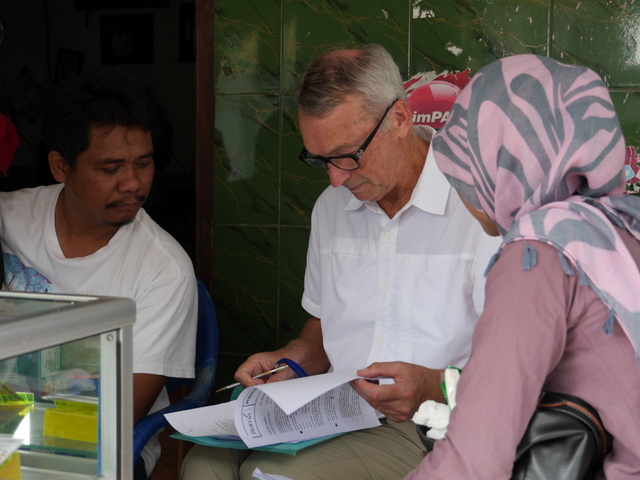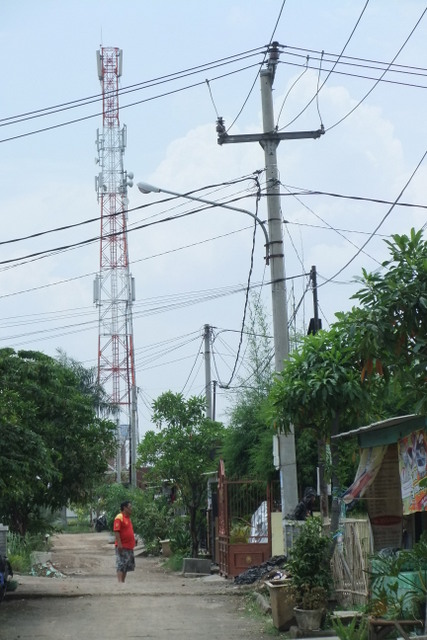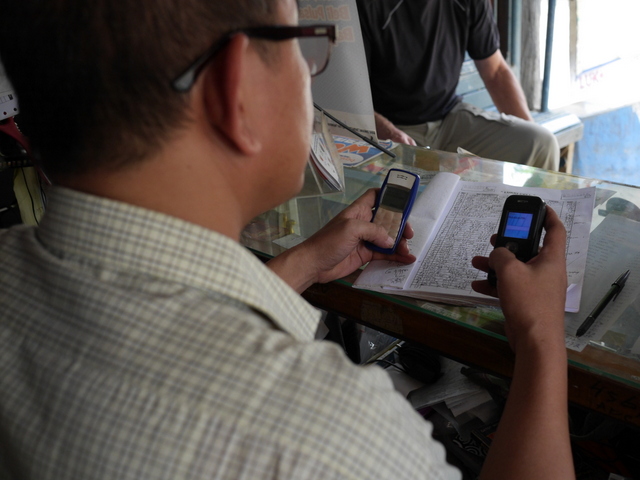
Anin could be a typical 24 year old in Canada. She is working at a job totally unrelated to her university degree in Agroforestry. Moving to Kalimantan or Sumatra where the jobs are is not an option for her partly because her parents want her to stay on Java.
The thing she likes about PT Ruma where she works is its mission and believes it is making a social impact in the villages of West Jakarta. Like so many Indonesians I have met, they love their country and want to make it a better place. So for now, she is finding purpose in her work.
Anin accompanied me for some of the Borrower Verifications I did at PT Ruma. This process is important for maintaining the integrity of the Kiva website. When lenders go to www.kiva.org and look for borrowers to lend money to, they need to be able to trust that what they see is true. As the name implies the process verifies that the borrower exits, he/she has received the loan and is using it as described in the profile. We also check the integrity and completeness of communication between the partner and borrower.
 Doing the paper work
Doing the paper workMost people in the small villages have a cell phone. Cell phone towers are visible all throughout the country. A Samsung touch screen phone is a status symbol for young people in villages and they can use it access Face Book and other social media. They will pay $150 to $250 which is a lot of money. Operation is cheap compared to Canada. Basic phone time will cost about $1.60/month. Internet access added on is about $10/month.
 Signs of Technology in the Village. Not Always Pretty
Signs of Technology in the Village. Not Always PrettyPT Ruma is harnessing this technology to have a positive social impact. Ben, the GM of PT Ruma told me their core business going forward will be providing mobile banking services. Saving in rural Indonesia has typically been in the piggy bank or under the mattress. You can always find excuses to dip into the piggy bank but it is not as easy if the money is in the bank. There are many reasons why they don’t save in a bank.
- Deposits have to be a minimum size at a bank
- Banks are not close to home and there are no ATMs
- Banks charge for deposits. Deposits of rural people are typically small.
So, what is the social impact that Anin believes so strongly in. The services are not the impact but the economic improvement in people’s lives as a result of them. Making it possible for poor people in rural communities to save money in a bank has many positive long term spin offs.
- Allows them to save effectively for things like children’s education.
- Gives the saver a credit rating which would allow them easier access to credit in the future.
- Will give them access to other banking and financial services
- Will lead to access of more formal products such as insurance.
 Eddie using his printer for a receipt
Eddie using his printer for a receipt Cell Phone technology at its best
Cell Phone technology at its bestThere is a Ruma sign at his store which illuminates after dark. They are branding themselves in rural Jakarta as the place to do your banking. In a cash based society like Indonesia, ATMs are plentiful but not in the villages. It is not profitable for banks to install the expensive machines in rural communities. Ruma can be the ATM of the village; another benefit for these communities.
 Your local bank/ATM
Your local bank/ATMOne of Kiva’s goals is “reaching excluded customers”; in other words to provide equal opportunity to those who are disadvantaged because of their circumstances.
PREVIOUS ARTICLE
Supporting community during tragedy: Lending to borrowers in the Philippines after Typhoon Haiyan →NEXT ARTICLE
What's New on Kiva: Team impact, annual report and collections →













